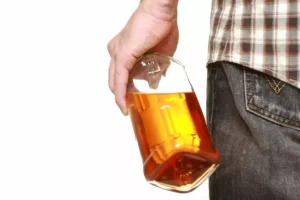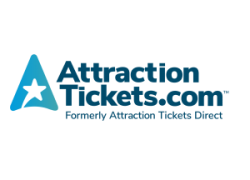
These conditions include major depressive disorder (3–7), clinically-significant depressive and anxious symptoms in the context of life-threatening cancer (8–11), obsessive compulsive disorder (12), alcohol use disorder and smoking cessation (13–15). The PCQ-26 queries a mixture of emotional states that often occur during the psychedelic experience itself, such as a sense of awe, connection with nature and feelings of joy, but queries longer-lasting change in these emotions because of psychedelic use, rather than their occurrence during psychedelic dosing sessions per se. In addition, the PCQ-26 queries symptoms common to a variety of mental disorders, such as ruminative thinking and suicidal ideation, as well as substance misuse and criminality. As described below, exploratory factor analysis revealed three principal components that account for 59% of scale variance.
- The pivotal phase 3 clinical program of COMP360 psilocybin treatment in TRD is the largest randomized, controlled, double-blind psilocybin treatment clinical program ever conducted.
- Of note, these findings were also published 1 year earlier, though less methodological detail was provided.43 The test-retest questionnaire was assessed after administration of 60 mcg LSD.
- Results from the current study suggest several potentially fruitful lines of future research.
- Table 6 shows the relative frequency of each of the eight negative items in the population of participants who endorsed at least one negative outcome.
- Illegal and long stigmatized as drugs of abuse, psychedelics seem unlikely candidates for the explosion of cultural interest and commercial development they have engendered in recent years.
Psychedelic therapy for depressive symptoms: A systematic review and meta-analysis

Forward-looking statements This press release contains forward-looking statements within the meaning of the Private Securities Litigation Reform Act of 1995, as amended. In some cases, forward-looking statements can be identified by terminology such as “may”, “might”, “will”, “could”, “would”, “should”, “expect”, “intend”, “plan”, “objective”, “anticipate”, “believe”, “contemplate”, “estimate”, “predict”, “potential”, “continue” and “ongoing,” or the negative of these terms or other comparable terminology, although not all forward-looking statements contain these words. The forward-looking statements in this press release are neither promises nor guarantees, and you should not place undue reliance on these forward-looking statements because they involve known and unknown risks, uncertainties, and other factors, many of which are beyond Compass’s control and which could cause actual results, levels of activity, performance or achievements to differ materially from those expressed or implied by these forward-looking statements. Thompson is currently part of a study at CU Anschutz looking at how psilocybin can assist with treatment-resistant depression. Previous research has shown that psychedelics are at their most beneficial when coupled with therapy.

How psychedelic drugs may help with depression
These findings may challenge current psychedelic development programs that propose limited dosing strategies, especially given our finding that participants with a single lifetime psychedelic exposure reported significantly less improvement in depression, anxiety and well-being than did those with higher levels of use. However, our study design does not allow us to determine whether associations between increased psychedelic use and enhanced self-reported mental health reflect benefits derived from dose loading strategies (i.e., repeated dosing over a short period of time to maximize acute effects), maintenance of effect strategies (i.e., treatment to prevent or treat relapse) or both. However, if one assumes that these self-reported patterns of use map at least somewhat onto the clinical needs of the study participants, current results suggest that psychedelics may require a significant degree of redosing for maximal therapeutic effect. On the other hand, our findings suggest a point of diminishing returns in regard to the mental health benefits individuals tend to receive from psychedelic use in naturalistic settings.
PCQ-26: Factor Analysis and Association With Lifetime Psychedelic Use

This low dose was thought to produce short-lived, mild LSD effects that would not substantially facilitate the therapeutic process. The control group entered an open-label crossover to 200 mcg LSD after the treatment blind was broken. The number, frequency and intensity of drug-related adverse events was higher in the high dose condition compared with the low dose condition, though anger, anxiety, and abnormal thinking were more frequent in the low dose condition. Self-rated anxiety (trait and state) decreased after two high dose sessions with LSD – an effect that was sustained up to 12 months after treatment.

Experimental research with psilocybin
These COMP004 study data were published in the March edition of the Journal of Clinical Psychiatry. Afterwards researchers also scanned the brains of the mice and saw increased connections between cells. All claims expressed in this article are solely those of the authors and do not necessarily represent those of their affiliated organizations, or those of the publisher, the editors and the reviewers. Any product that may be evaluated in this article, or claim that may be made by its manufacturer, is not guaranteed or endorsed by the publisher. The entire PAWS survey is available as supplemental information to this article. The selection and review process that resulted in 14 articles for inclusion in the current review.
- When the researchers used an electrical current to allow compounds like serotonin to enter neurons, the compounds promoted dendritic spine growth.
- Early research indicates that the psilocybin found in psychedelic mushrooms could be beneficial in treating mental-health conditions such as PTSD, anxiety, addiction and perhaps even previous traumas such as abuse or assault.
- The patients/participants provided informed consent by clicking an online statement that said, ‘If you agree to participate, please click here to proceed to the survey’.
In particular, our finding that a minority of participants felt that psychedelic use had increased the problematic use of other substances is an area of obvious importance for the development of these agents as novel therapeutic modalities. Given that naturalistic studies such as ours typically enroll far more heterogenous samples than are allowed within the guard rails of clinical research, they may be especially informative in terms of the risks that will be involved when psychedelics are clinically available to the general population. Finally, we did not observe strong associations between preferred psychedelic agent and self-reported behavioral outcomes, but much remains to be learned from head-to-head comparisons between psychedelics regarding whether one agent is superior to another for any given indication, in either naturalistic or clinical settings. With regard to the dosing schedule, only one recent study aimed to test the effects of repeated LSD doses on psychological and cognitive functions.27,33 It was shown that LSD blood concentrations were not affected after repeated dosing when leaving two dose-free days in between.
Early research are psychedelics addictive indicates that the psilocybin found in psychedelic mushrooms could be beneficial in treating mental-health conditions such as PTSD, anxiety, addiction and perhaps even previous traumas such as abuse or assault. The studies involving human participants were reviewed and approved by Western Institutional Review Board (WIRB). The patients/participants provided informed consent by clicking an online statement that said, ‘If you agree to participate, please click here to proceed to the survey’.
Classical psychedelics for the treatment of depression and anxiety: A systematic review

While recognizing that the universe of potential harms is nearly infinite, the NCI-8 focuses on concerns that have been of primary historic significance for the use of psychedelics; specifically, that these agents would encourage ongoing illicit drug use and lead to problematic/antisocial behavior. The NCI-8 queried eight potential negative outcomes participants ascribed to their psychedelic use, including increased suicidal desire, criminal impulses/behaviors, aggressive impulses/behaviors, alcohol misuse, cigarette smoking, cannabis/marijuana misuse, benzodiazepine misuse, and opiate/opioid misuse. In the past, a number of experimental LSD studies were conducted, investigating the effects on cognitive and physiological measures.
The remaining authors declare that the research was conducted in the absence of any commercial or financial relationships that could be construed as a potential conflict of interest. The raw data supporting the conclusions of this article will be made available by the authors, without undue reservation. An NIH-funded research team led by Dr. David Olson from the University of California, Davis previously developed a sensor that could distinguish which drugs that bind to 5-HT2AR have hallucinogenic properties and which don’t. In a new study, the team set out to better understand why only certain compounds that bind 5-HT2AR drive plasticity. If the mechanisms could be understood, it might be possible to develop related drugs that can promote brain plasticity without causing unwanted hallucinogenic effects.
- Of note, previously it was demonstrated by Isbell and colleagues that tolerance to the effects of (a higher dose of) LSD (75 mcg) occurred after repeated dosing with low doses of LSD (10–30 mcg), given twice daily for 3 days in a row.41 Nonetheless, this tolerance was transient and disappeared after three dose-less days.
- Dr. Scott Thompson is a neuroscientist at the University of Colorado School of Medicine.
- Some people have reported conversations with people they’ve lost or returning to certain past experiences.
- Nonetheless, this would require careful weighing up of the risks of discounting serotonergic antidepressants against the potential benefits of using serotonergic psychedelics in microdoses.
Study Design
More work is needed to understand how to safely activate the pathways for brain drug addiction treatment plasticity while avoiding hallucinogenic effects. “These results give us deeper mechanistic insight into how the receptor promotes plasticity, and may allow us to design better drugs,” Olson says. These results suggest that the 5-HT2ARs inside and outside of neurons activate different cell-signaling pathways. When the researchers used an electrical current to allow compounds like serotonin to enter neurons, the compounds promoted dendritic spine growth.








No Comments
Leave Comment